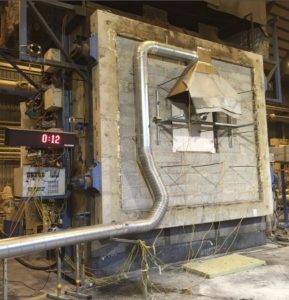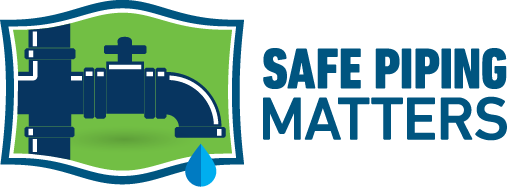Burning PVC Pipes Emit Toxic Chemicals
Polyvinyl chloride (PVC) is widely used in construction, including plumbing, flooring, and wall coverings. However, concerns over its combustion byproducts have increased due to their impact on human health and fire safety. This report examines the toxic emissions produced when PVC pipes burn, presenting findings from two standardized burn tests conducted by independent laboratories.
Health Concerns of Burning PVC
When exposed to fire, PVC decomposes, releasing a range of toxic gases. The primary hazardous emission is hydrogen chloride (HCl), which forms hydrochloric acid upon contact with moisture, severely affecting respiratory function. Other emissions include carbon monoxide (CO), hydrogen cyanide (HCN), sulfur dioxide (SO2), nitrogen oxides (NOx), and dioxins, all of which pose serious health risks.
Firefighters and building occupants exposed to PVC combustion products may suffer from acute respiratory distress, chemical burns, and, in some cases, long-term conditions such as chronic obstructive pulmonary disease (COPD) and increased cancer risk. The International Association of Firefighters has recognized hydrogen chloride and dioxins as major contributors to fire-related health hazards.
Burn Test Methodology

Two separate laboratory tests were conducted to assess the toxicity of PVC combustion byproducts.
First Test: A full-scale fire scenario simulated a burning PVC pipe penetrating a fire-rated wall assembly, using firestopping materials and qualified installation methods. The test measured toxic emissions over a 60-minute burn period, with gases collected above the burn area.
Second Test: A controlled chamber burn of a PVC pipe sample followed ASTM fire testing protocols, measuring toxic gas concentrations over a 20-minute period.
Both tests used Fourier transform infrared spectroscopy (FTIR) to identify and quantify hazardous emissions.
Key Findings
Hydrogen Chloride (HCl) Emissions
In the first test, hydrogen chloride concentrations peaked at 709 parts per million (ppm) within 42 minutes. The average concentration over the hour was 120 ppm.
Public health exposure limits were exceeded within 14 minutes.
In the second test, hydrogen chloride reached 919 ppm within 11 minutes under flaming conditions and 559 ppm under non-flaming conditions.
Exposure limits were exceeded 700 times during the one-hour test period.
Other Toxic Emissions
Carbon monoxide (CO): A lethal gas that can cause unconsciousness and death in enclosed fire scenarios.
Hydrogen cyanide (HCN): Highly toxic, inhibiting cellular respiration.
Sulfur dioxide (SO2) & Nitrogen oxides (NOx): Cause severe irritation to the respiratory system and contribute to long-term pulmonary conditions.
Dioxins: Persistent environmental toxins linked to cancer and immune system suppression.
Impact on Human Health
The rapid exceedance of exposure limits presents a critical risk in fire situations, particularly in enclosed spaces such as hospitals, schools, and residential buildings. Vulnerable populations—including the elderly, children, and individuals with preexisting respiratory conditions—are at heightened risk of injury or fatality from toxic inhalation.
Firefighters face increased cancer rates due to repeated exposure to these toxins. Immediate symptoms include severe respiratory distress, chemical burns, and potential permanent lung damage after a single exposure to high concentrations of hydrogen chloride and other gases.
Regulatory and Safety Implications
Despite the well-documented hazards of PVC combustion, standard fire testing does not fully account for the toxic emissions released in real-world fires. Current fire codes allow PVC pipes based on flame spread ratings rather than emissions toxicity. Testing modifications such as ASTM E84 fail to capture the health hazards associated with burning plastics.
Conclusion
The data confirm that burning PVC pipes release dangerous levels of toxic gases, particularly hydrogen chloride, which can exceed safety limits within minutes. These findings support a reevaluation of building codes, material selection, and fire safety regulations to prioritize noncombustible alternatives in plumbing and other critical applications.
